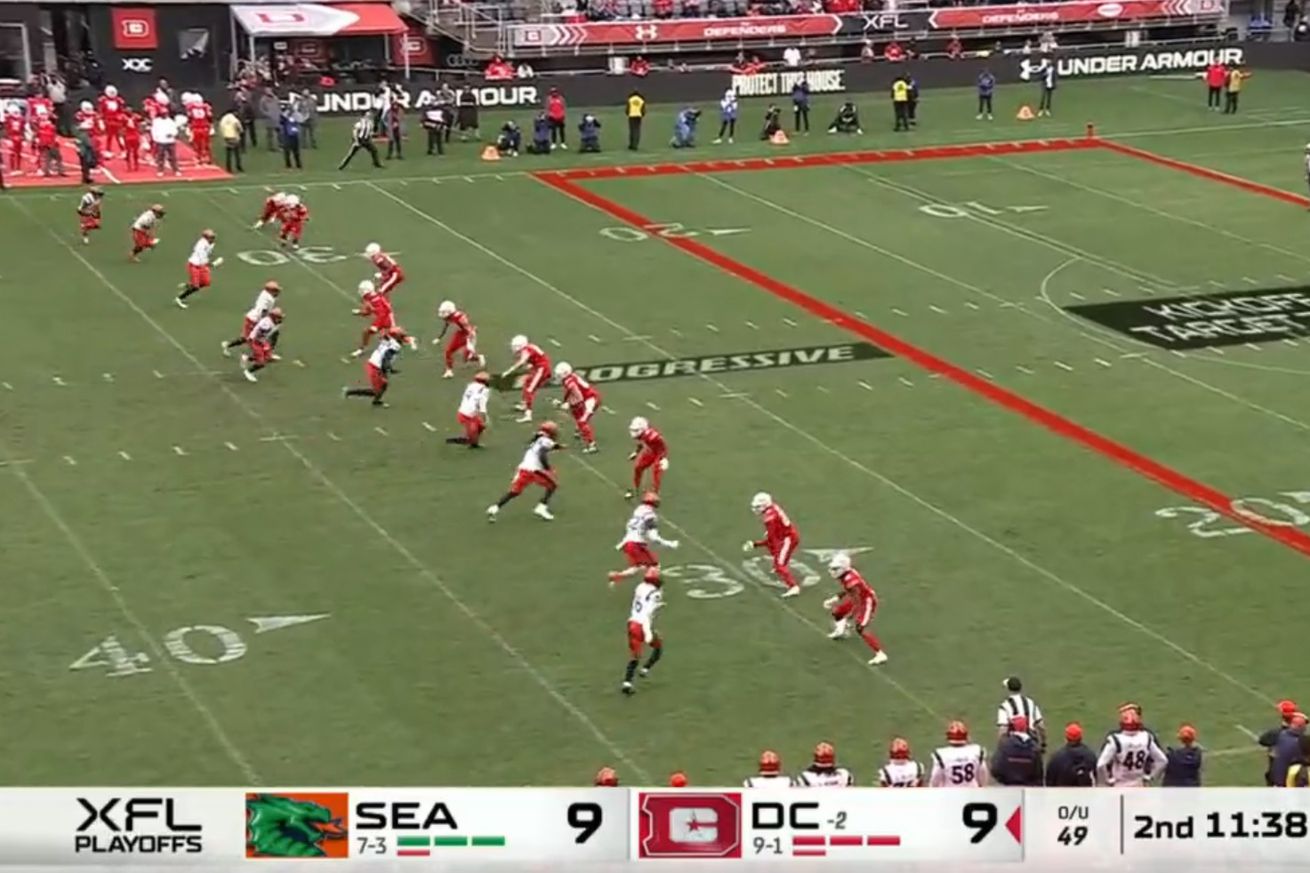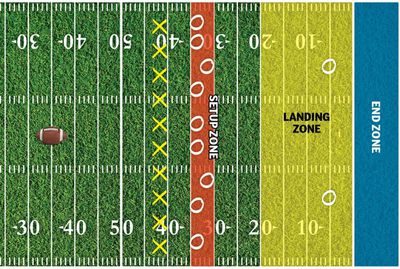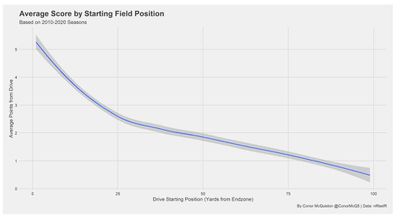
It’s 5 o’clock somewhere…
The 5 o’clock club is published from time to time during the season, and aims to provide a forum for reader-driven discussion at a time of day when there isn’t much NFL news being published. Feel free to introduce topics that interest you in the comments below.
CLICK HERE to see the full 5 o’clock club archive
The NFL is trying to bring relevance back to the kickoff while enhancing player safety. The new kickoff rules are apparently not identical to those pioneered by professional Spring football, but they are pretty close to the same and were clearly inspired by what the design of the play in the other league. I’m not going to discuss the differences, but I do want to try to hit the highlights of how the reformatted kickoff will work in the NFL in 2024.
The new kickoff
I’ve added some videos below that might be more enlightening, but here’s my attempt to highlight some important elements of the play. To read the full explanation of the rules from the NFL, Click Here.

When the ball leaves the kicker’s foot at the 35-yard line, unlike what we’ve traditionally seen, there is no movement of the potential blockers (in the red ‘setup zone’) and potential tacklers lined up at the 40 yard line. The only people moving at this point are the kicker and the one or two return men in the yellow zone.
The blockers and tacklers in the setup zone can only start moving when one of two things happens: either the ball hits the ground or it is fielded by one of the returners. Then the blockers and tacklers start doing their jobs. The kicker also can’t cross the 50-yard line before the blockers and tacklers start moving.
Once the ball is in the air, only a limited number of outcomes are possible:
- The ball goes out of bounds (but not over the back of the end zone). If the ball goes out of bounds, the rule is the same as it was last year; the play is blown dead and the ball is placed at the 40-yard line.
- The ball is short of the landing zone (it doesn’t reach the 20 yard line). This is treated the same as an out-of-bounds kick. The play is blown dead and the ball is placed at the 40-yard line.
- The ball reaches the end zone in the air. It can be returned, downed, or it can roll or bounce out of the end zone. If it is downed or if the ball rolls or bounces out of bounds after reaching the end zone in the air, the play is blown dead and the ball is spotted at the 30-yard line.
- The ball is kicked beyond the end zone in the air. This is the same as a ball that hits the end zone and rolls or bounces out of bounds; the play is blown dead and the ball is spotted at the 30-yard line.
- The ball comes down in the landing zone (between the goal line and the 20-yard line). In this case, the ball must be returned unless it bounces into or through the end zone. If it goes into the end zone, then the ball can be returned or downed. If downed or if the ball bounces from the landing zone through the back of the end zone, then the play is blown dead and the ball is spotted at the 20-yard line.
The power of field position
One of the strongest correlations in NFL football is between starting field position and points scored.

This chart from the 33rd team
Between 2010 and 2020, NFL teams averaged 243 drives per regular season, so for every additional net yard per punt an NFL offense can expect to score 7.29 more points over the course of a regular season.
This says that 1 yard of field position is worth 7.29 points in a 16-game season (a 2021 article), or just under a half-point per game on average. In other words, an improvement in average field position of about 6.5 yards should result in increased scoring of roughly 3 points per game.
This calculation isn’t gospel, but the relationship in the graph above is pretty clear, and the idea that a team will, on average, score about 3 more points per game by improving its average starting field position by 6.5 yards feels about right.
Strategy
The rules for the new kickoff are built around this power of field position, and are designed to motivate kicking teams to put the ball in play and to return teams to actually return the ball when it is fielded. In other words, the league wants to replace the largely ceremonial play that the kickoff was in 2023 with a genuine and potentially exciting play in 2024.
After thinking about it for a few minutes, I believe the kicking team’s optimum strategy should be to aim to place the ball as close to the goal line as possible without actually hitting the end zone. If the ball bounces into the end zone and is downed, the ball ends up at the 20-yard line. Any ball that is fielded and returned will force the return man to start from the deepest possible point under the rules. A kicker with an accurate leg and the ability to control the ball will be more useful than a guy with the powerful leg that has been valued in the NFL in recent years. Since he may also end up being a tackler, there has been some talk of teaching a linebacker or safety to kick off rather than risk injury to the field goal kicker.
When the return man gets the ball in his hands, he will be facing a wall of ten tacklers at his own 40-yard line who only start moving when he fields the ball. Getting upfield in a hurry would seem to be the priority, and return men that have the power to break tackles along with the ability to make tacklers miss in the open field should have lots of opportunities for big returns.
The average starting position per drive in the NFL in 2023 was between the 28 & 29 yard lines. This wasn’t just following kickoff; it included punts, turnovers, etc.
In the 2010 season there were a total of just 416 touchbacks league-wide and the return yardage on kickoffs was around 45,000. In 2023, there were a whopping 1,970 touchbacks and just 13,000 return yards. The starting field position following kickoffs last season was heavily anchored to the 25-yard line.
Imagine the potential positive effect on league-wide scoring if return teams can advance that average starting field position on kickoffs beyond the 30-yard line. That alone could lead to an increase in scoring in the NFL, but it’s also possible that we may see something else that’s become increasingly rare in the NFL — kickoff returns for touchdowns. From 1994 to 2010, there was at least one player every season who had 2 or more TD returns on kickoffs in a season. That has happened only 5 times since the end of the 2010 season, and none of those 5 guys scored more than 2 TDs on kickoff returns. By contrast, in 2009-10, three different players tallied 3 TD returns in a single season, and another two players did the same in 2007.
Videos
#NFL new hybrid kick off: yay or nay? pic.twitter.com/9CA8HAmKVA
— Arabia ⛈️ (@ALL32NFL_) March 26, 2024
Since the NFL is adopting the XFL style kickoff throwback to the best return man in NFL history @ceeflashpee84⚡️⚡️ pic.twitter.com/uAHJe9xiHd
— ☔️ (@Winnesota18) March 26, 2024
Normally I hate Special Teams talk. But the new kickoff returns do intrigue me. The two firing squads will be lined up at the receiving team’s 35 and 40 yard lines, not the 30 and 35 yard lines like in these XFL videos. But still. Imagine De’Von Achane as the return man. pic.twitter.com/1IWth8EotS
— Chris Kouffman (@ckparrot) March 26, 2024
Reports are that NFL is considering adopting the XFL’s kickoff format the increases returns and decreases injuries. In 2022, only 38% of NFL kickoffs were returned while the XFL’s 2020 season saw 97% of kickoffs returned #NFLTwitter pic.twitter.com/4IRq3V6IZJ
— Off The Deck Sports (@OTDSports_) August 2, 2023
